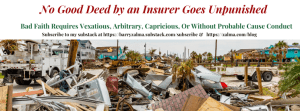What is the smallest size double wide mobile home?
What is the smallest size double wide mobile home?
The biggest difference between a single wide and a double wide home is size. The smaller double wides usually start at around 1,067sf and can go up to a maximum of about 2,300sf. Double wides start at 20 feet and go up to 36 feet. Most common sizes are 24, 28 and 32 feet wide.
What is the largest double wide mobile home?
Tour the Orchard 32×90 the largest Double Wide Manufactured Home in the area! This home can also be built as a Modular Home.
Is it safe to live in a mobile home in Florida?
Fact – manufactured homes are as safe as traditional homes during a storm. Federal standards require all newly-manufactured homes to meet stringent requirements for installation and anchoring in accordance with structural design and windstorm standards.
How much does a double wide cost in Florida?
Buying a Used Mobile Home The average price of a used mobile home in Florida is around $47,853, but options can range far below or above this. The average size was about 1,100 feet (a usual double-wide).
How much does it cost for a manufactured home in Florida?
The average cost of a manufactured home in Ocala is $70,500* with an average monthly payment (including land and site prep costs) of $632-1,264**.
Can you live in a tiny home in Florida?
Florida is generally very accepting of the tiny home community, however, you still need to check with the county you’re moving to in order to make sure they are, in fact, allowed.
What is the zoning in Florida for mobile homes?
Most of Florida is in Zone 2, except that the bottom counties are Zone 3, and there is a special category “D-sticker” for homes sited near the coastline. No mobile homes rated for Zone 1 can be placed in Florida. Oct 24, 2018
What 2 things are not covered under a property insurance policy?
Termites and insect damage, bird or rodent damage, rust, rot, mold, and general wear and tear are not covered. Damage caused by smog or smoke from industrial or agricultural operations is also not covered. If something is poorly made or has a hidden defect, this is generally excluded and won’t be covered.
What are 2 things not covered in homeowners insurance?
Standard homeowners insurance policies typically do not include coverage for valuable jewelry, artwork, other collectibles, identity theft protection, or damage caused by an earthquake or a flood. Jul 12, 2021
What area is not protected by most homeowners insurance?
2. What’s NOT Covered On a Standard Homeowners Insurance … Earthquake and water damage. In most states, earthquakes, sinkholes, and other earth movements are not covered by your standard policy.
What is better HO3 or HO5?
An HO-3 policy only covers personal property for named perils, while an HO-5 policy covers personal property for open perils. In simple terms, this means an HO-5 insurance policy is more comprehensive and covers damage to your personal property in all cases, except damage specifically excluded from your policy. Feb 23, 2022
What is HO3 and HO5?
HO5 policies cover your contents at replacement cost. This means you’ll be paid enough money to buy a new item. An HO3 policy pays you actual cash value for your contents. This takes into account depreciation and pays you the amount your items would sell for on the open market.
What is the difference between HO2 and HO3?
With HO2 coverage, your dwelling coverage is written as named perils which means that your home structure is only covered by perils included in your policy. On the flipside, with HO3 coverage, your dwelling coverage is written as open perils which means that unless a peril is specifically excluded, it is covered. Aug 6, 2020
What is covered under HO 5?
Dwelling: HO-5 dwelling coverage protects your home’s main structure, including its exterior and interior walls, foundation and roof. Other structures: This type of coverage protects detached structures on your property, like fences, gazebos, guest houses and swimming pools. Aug 5, 2020
What is an HO 6 insurance policy?
An HO6 insurance policy is homeowners insurance for those who own a condominium or co-op unit. As a condo or co-op unit owner, you own and are likely responsible for damages to your unit.
What is ho3 insurance?
Homeowners Policy Special Form 3 (HO 3) — part of the Insurance Services Office, Inc. (ISO), homeowners forms portfolio, the HO 3 insures the described owner-occupied dwelling, private structures in connection with the dwelling, unscheduled personal property on and away from the premises, and loss of use.
Will bricking a mobile home make it stronger?
Adding brick to a manufactured home increases the house value up to three times. Bricking a manufactured home is an excellent way to increase the value of the home and property. Brick exteriors on these types of homes can easily increase the value of the home two to three times more than its current price.
Can a mobile home tip over?
It all depends on wind strength; hurricane-force wind speeds of 74 mph and above can damage or destroy a mobile home. You can take precautions to tie down and secure an older mobile home against high winds and other natural forces. Aug 19, 2021
Can you get hurricane insurance on a mobile home in Florida?
Insurance companies in Florida are required to expand coverage against wind damage from named hurricanes, but a mobile home policy does not cover flooding. You will need to purchase additional flood insurance through FEMA’s National Flood Insurance Program (NFIP) or a private home insurance carrier to provide coverage. Oct 7, 2021
How do you hurricane proof a mobile home?
Make sure your address number is clearly marked on your mobile home. Check and secure all of your mobile home’s tie-downs. Secure any loose roofing and siding. Trim dead or broken branches from trees. …Keep Your Mobile Home in Good Repair Plywood. Shutters and/or protective window film. Plastic sheeting. Nails.


